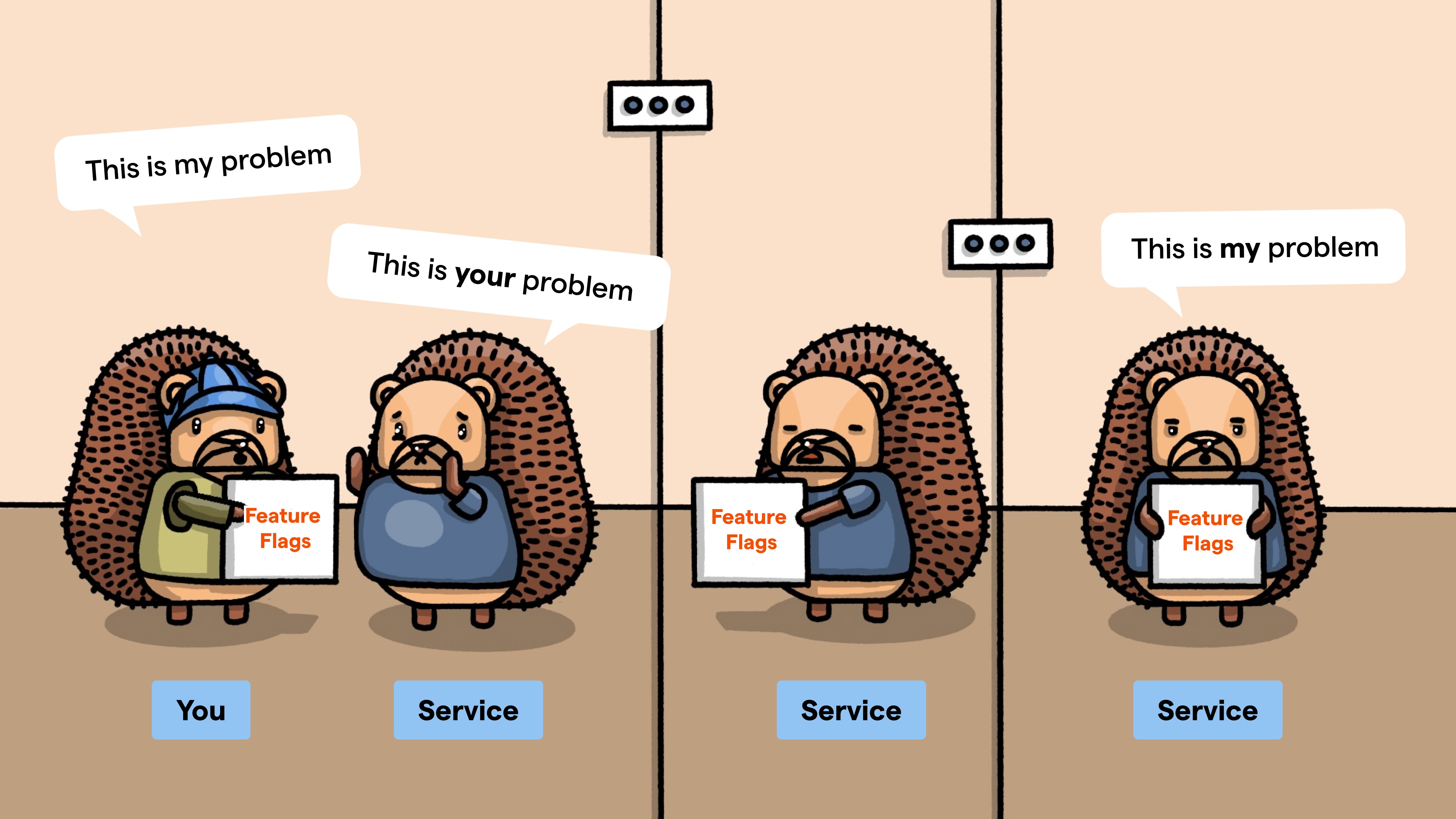Feature flags as a service: Should you build or buy?
Sep 12, 2023

Feature flags are a tool to conditionally turn on or off code and components. They enable you to safely deploy or roll back new features, which helps you follow the best practice of disconnecting deployment from release.
The basic functionality of feature flags is simple enough to build yourself. The challenge comes as you scale and your needs become more complex. In this post, we'll cover:
- The functionality of a feature flag service.
- The challenges of building a service in-house.
- The benefits of feature flags as a service.
- How to make the build vs. buy decision.
How does a feature flag service work?
In its simplest form, a feature flag service is:
- A store of flags with keys and their associated values.
- A function that takes a key, checks the store, and returns a value.
In Python, this might look like:
This enables you to simply toggle on or off features from a centralized location.
The challenge of rolling your own feature flag service
The problem with this simple service is that the values are hard coded and require a redeploy to change. It isn’t configurable remotely, meaning it can’t change at runtime.
The path to improving this requires building increasingly complicated features, each with downsides:
Use a config to store the flag values. This still requires a redeploy to update flag values. Read more in Feature flags vs configuration: Which should you choose?
Store flag values in your database. This requires an admin panel or root access to modify the values and puts stress on your infrastructure. Database issues also impact the resiliency of flags.
Write an external service or use a library to manage and evaluate feature flags. New dependencies require maintenance and optimization work to ensure they remain fast and bug-free.
Beyond these are features like targeting logic, caching for speed, or resiliency for parts of the service going down. Each adds to the likelihood of introducing bugs and creating tech debt.
Feature flag services become a classic build vs. buy decision. Building a feature flag service works well if you have a clear, simple use case. As you scale, "outsourcing" the work to a feature flags as a service provider becomes more attractive.
How do feature flags as a service work?
A "feature flags as a service" provider is an external application that provides all the functionality for implementing and using feature flags (like PostHog). It is a centralized location to create, manage, evaluate, and monitor your feature flags. This enables remote configuration and decoupling deployment from release.
Feature flags as a service integrate with your app like other external services. They have a UI to create flags and SDKs or an API to integrate them. For example, in PostHog, a feature flag call is as simple as this:
Feature flag services also contain features for more complicated use cases, such as:
- Targeting feature flags for percentage rollouts, betas, testing in production, and more.
- Multi-variant flags that enable A/B testing.
- Integrations with other external services like product analytics, CDPs, and automations.
- Speed and resiliency optimizations like local evaluation and caching.
- Logging and analytics.
Why use a feature flags as a service provider?
The benefit of using a feature flag service is similar to the benefit of using other external services. You get the functionality of feature flags while (theoretically) minimizing their costs. This enables you to focus on building a differentiated product.
With feature flags as a service, you gain more confidence in:
Usability. The service provides a centralized location and UI to manage flags.
Reliability. The service takes care of the infrastructure, redundancy, and speed.
Interoperability. The service connects to any part of your application (SDKs) and other external services.
In fewer words, you pass your potential problems off to them.

Deciding whether to build or buy
Ultimately, the decision to build or buy is determined by which approach enables you to build a successful product. You should consider building over buying when your use is:
Unique and requires a specific implementation tied to your core competency. For example, a crypto app requiring on-chain data for targeting.
Extremely simple. For example, you only need to toggle a single feature on or off.
In more complex situations, the costs of building and maintaining your own feature flag service outweigh the benefits. The usability, reliability, and interoperability you get from buying a feature flag service enables you to focus on areas of your product you can differentiate on. In these cases, buying a feature flag service is a better help to your in building a successful product.
Further reading
- Feature flag best practices and tips (with examples)
- Why use feature flags? Benefits, types and use cases, explained
- What you can learn from how GitHub and GitLab use feature flags

Subscribe to our newsletter
Product for Engineers
Sharing what we learn about building successful products. Read by 25,000+ founders and developers.
We'll share your email with Substack
